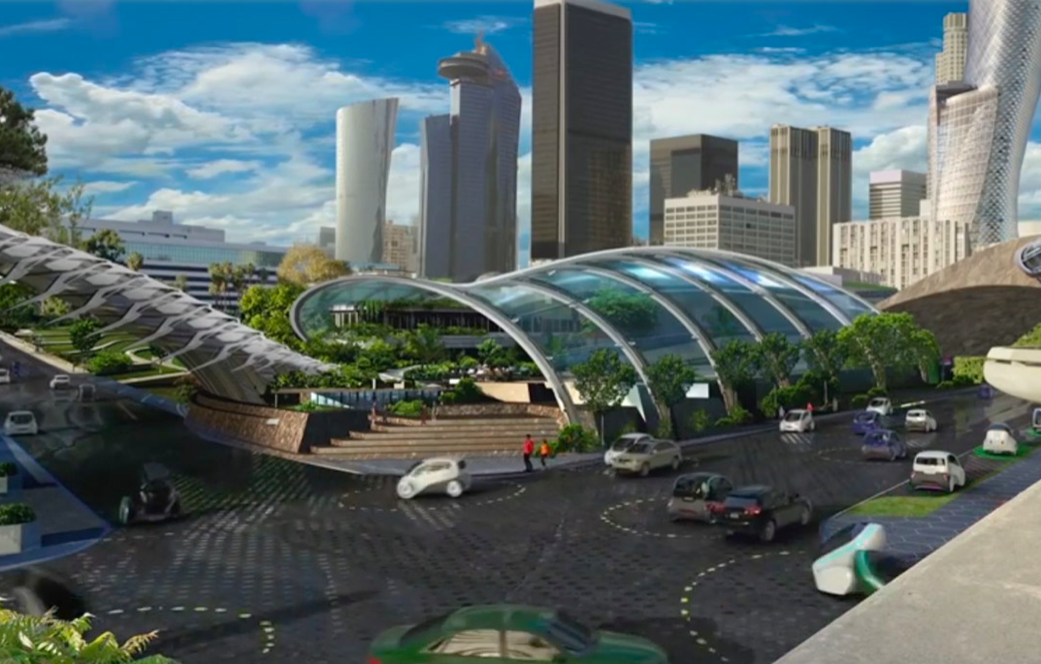In a future with self driving cars, pedestrians would wait in gated pens until they were allowed to cross the street. People wealthy enough to buy self-driving cars get their own special lanes in crowded cities.
Those are some of the ideas self-serving car companies are presenting to the New York Times as "solutions" to social problems. This latest bill of goods from Big Auto is extremely alarming. Let's us count the ways:
'Antiseptic' soulless cities
Even auto industry representatives are apparently worried this new technology will totally wreck cities.
Frank Menchaca, head of the industry-friendly Society of Automotive Engineers, told the Times: “We need students educated in art and design to get involved in the future so we don’t get antiseptic cities.”
In other words, these guys are planning to totally redesign cities around self-driving cars. Companies like Ford have pushed these kinds of grandiose visions before (see above photo.)
It is reminiscent of General Motor's famous "Futurama" display at the 1939 World Fair, that showed soaring highways and suburbs as a futuristic vision of a new way of living, and precipitated the tremendously destructive highway sprawl that followed in the upcoming decades.
On Jaywalking
The article starts out by wondering how self-driving cars will function in cities like New York where lots of people "jaywalk."
Instead of, you know, just stopping and waiting, car companies have devised a way to help ensure that drivers retain their near total privilege to the roads — even in a place like Manhattan. The Times' Eric Taub writes:
One solution, suggested by an automotive industry official, is gates at each corner, which would periodically open to allow pedestrians to cross.
Yikes.
Taub then dismisses the idea saying it's "as likely as never-late subways." But he adds "it’s an example of the thinking by those who worry about planning for the future."
Later in the article, Taub also vaguely references Chris Gerdes, the director of the Center for Automotive Research at Stanford University, saying, “We may be able to locate crosswalks at different locations."
Crosswalks "may" need to be "relocated?" Are there going to be less crosswalks? We don't know.
He then adds: “A.V.s may be able to sense the presence of pedestrians and slow down when needed.”
Let's hope so. A self-driving Uber car killed a pedestrian — Elaine Herzberg — last year in Tempe, Ariz.
Special AV lanes
Taub adds:
It’s possible that self-driving cars will need their own lanes, to avoid mixing it up with cars driven by humans, whose errors now account for 94 percent of vehicle crashes.
So in crowded cities where everybody — cyclists, pedestrians bus riders — are fighting for scraps, special lanes for fancy newer cars? If this is where the mainstream discourse on this issue is at this stage, we're in a lot of trouble.
Robin Chase, head of the New Urban Mobility alliance, famously said long ago that the future with self-driving cars would be like "heaven" or "hell."
In the heaven version, safety improves, cities are more multi-modal, less polluted, less congested. On the other hand, without strenuous advocacy, she said, we could have the hell version, where cars cruise around for hours empty to avoid paying for parking, where sprawl is supercharged, where pedestrians have to wear special devices to be detected are blamed when they are killed by a tide of constantly roving machines.
"I know for sure we’re going toward the hell version, because the status quo produces hell," she told me last year. "That is definitely the direction we’re going."
And the final horrifying part of the Times story is this: It doesn't quote anyone who seems to have a problem with the AV proponents' anti-urban vision.






